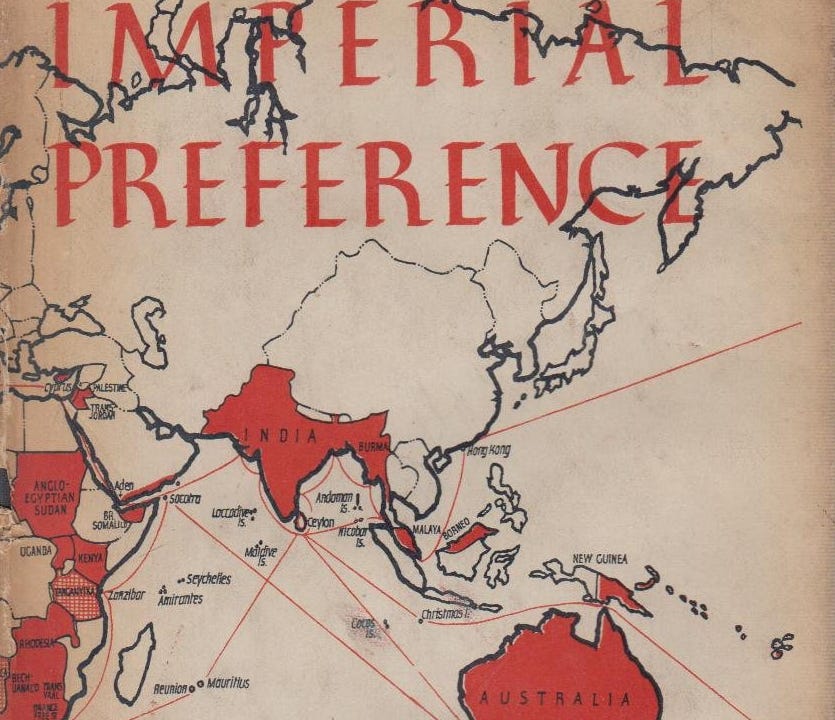Week signals: The Trump trade doctrine
Plus: watch points for Australia, China, the SCO, Ukraine, Russia, Cyprus, the UK, and Germany.

This week:
IN REVIEW. A cudgel for all things, a field guide to Trump's trade doctrine, key takeaways for business.
UP AHEAD. Albanese goes to Beijing, Eurasia goes to Tianjin, Trump pronounces on Russia, a Cypriot summit, and an Anglo-German treaty.
And don’t forget to connect with me on LinkedIn.
Week Signals is the Saturday note for clients of Geopolitical Strategy, also available to GD Professional subscribers on Geopolitical Dispatch.
The Week in Review: Geopolitics by other means
Co-authored with Damien Bruckard and Lukas Rottler.
The week began with Donald Trump threatening the BRICS with an extra 10% levy for "anti-American" activities. It ended with the EU pre-emptively dropping its digital services tax as it waited for Trump’s letter outlining his proposed 1 August tariffs. US equities gained. US customs duties recorded a gross intake of $113.3 billion for the first nine months of fiscal 2025. US markets largely ignored the threat of 50% tariffs for Brazil, largely premised on Jair Bolsonaro’s legal woes, or indeed the threat of 200% tariffs for pharmaceutical products.
The week has made it increasingly clear that the president's tariffs are not about fixing the trade deficit or restoring US manufacturing but are a cudgel for all things. Vladimir Putin has his nuclear weapons. Xi Jinping has his rare earths. Trump has the US consumer.
Threatening the use of tactical nukes or rare earth embargoes may be damaging for the world, but it has little immediate cost to Russia or China (aside from a few niche refineries, many of which are state-owned). Threatening access to the US market, however, raises costs for the American households he ostensibly claims to support. And while the tariffs are yet to show up meaningfully in inflation data (companies are "eating" the tariffs, to use Trump's phrase), the economic consensus is near unanimous in that they’ll show up eventually, posing grave risks for an indebted consumer and an overheated stock market. No wonder Jerome Powell is keeping his powder dry.
In the meantime, the tariffs are broadening in their use and Trump, with memories of the Liberation Day wobbles fast receding, is getting emboldened. A clearer picture is also emerging. Unlike his broader approach to foreign policy, Trump’s trade strategy is not erratic, but systematic – and it is something new. Not a return to 1980s-style protectionism, nor a continuation of his first-term improvisation, but a deliberately structured framework designed to coerce, disorient and control. It marks a definitive break from the principles that have underpinned American trade strategy since 1945.
The initial confusion surrounding Trump’s trade regime comes down to three factors. First, it is a radical departure – not just from Biden’s approach, but also from Trump’s own first term. Second, confusion is intentional: the policy deliberately injects uncertainty to destabilise partners and keep options open. And third, many analysts hesitate to believe it. The “Trump always chickens out” line is less an argument than a hope.
As we argued in a previous report on Trump’s worldview, three instincts drive his approach to international affairs: transaction, grievance, and unilateralism. Those instincts are now being applied, systematically, to trade. In conversations with clients, we’ve distilled a set of principles to help decode what otherwise looks like chaos. Think of this as a field guide to Trump’s second-term trade doctrine.
1. Trade – especially access to the US market – is not a public good. It’s a privilege with a default price.
Access to the US market is no longer treated as a shared benefit. It is a bargaining chip – a tool to extract concessions, enforce alignment, or punish disobedience. In Trump’s worldview, the system America built was overly generous, allowing others to profit at its expense. The new regime flips that logic. Trade is no longer the reward for cooperation. It is the threat that precedes it.
The default price to pay is now the new baseline tariffs. A 10% tariff applies to all imports, while dozens of countries have received letters indicating a higher baseline of 25–50% unless bilateral deals are signed. These measures are self-executing and WTO-incompatible. But they also serve domestic purposes: to show resolve, generate symbolic revenue, and – in Trump’s words – “make the others pay,” even if the economic incidence is misunderstood or ignored.
2. Fairness means bilateral balance.
What determines the scope and tone of each negotiation is Trump’s perception of


